Preparing For Double Digit Inflation
This morning I read an article on Forbes that said, "Multibillionaire hedge fund operator John Paulson, the investment genius who made a killing going short subprime mortgages a few years ago, told a standing room only crowd at New York’s University Club that double-digit inflation is about to rear its ugly head by 2012"
We're watching the value of our homes plummet, and see incredible bargains as the desperate unemployed unload their expensive cars, boats, and toys. We're seeing DEflation, not INflation!
The experts know the economy has a cycle. When people have jobs they have money to spend, demand on commodities increases and prices rise. That is inflation. At some point prices get so high demand falls. People lose their jobs, there's less money to spend, and prices fall. That's recession. Then the cycle begins again. Unless the government gets involved. TARP funds, bank bailouts, entitlement programs, and trillions in national debt have flooded the market with dollars.
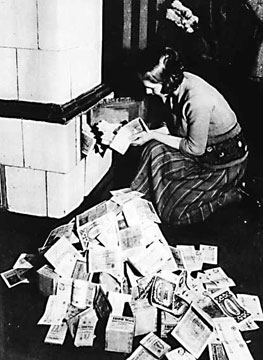 Historically, extreme inflationary periods and even hyperinflation, are not unusual. Extreme inflation is caused by a flood of currency in the market and a failure of confidence in that currency. In other words, people hold so much paper money that it has very little value. In the picture to the right, taken in Germany in 1923, a young woman stuffs money into a furnace, because a bucket of coal had more value than a pile of currency. Today the same situation exists in Zimbabwe. A decade ago Argentina suffered through hyperinflation. Dozens of countries around the globe have an inflation rate over 20%.
Historically, extreme inflationary periods and even hyperinflation, are not unusual. Extreme inflation is caused by a flood of currency in the market and a failure of confidence in that currency. In other words, people hold so much paper money that it has very little value. In the picture to the right, taken in Germany in 1923, a young woman stuffs money into a furnace, because a bucket of coal had more value than a pile of currency. Today the same situation exists in Zimbabwe. A decade ago Argentina suffered through hyperinflation. Dozens of countries around the globe have an inflation rate over 20%.
I lived through double digit inflation in the US in the 1970's, a result of the 1973 gas price increases and Nixon's price controls. Lemme tell you, it was not fun. My husband and I were newlyweds. Our dream house had a price tag of $46,000 so we needed around $15,000 for a down payment and closing costs. We banked our wedding presents and his salary and lived very frugally off of my paycheck. It would only take one year of giving up vacations and restaurants and all of the usual things young people do for fun, to reach our goal - or so we thought. As our savings closed in on the amount we needed, the price of the house went up. $46, 48, 54, 50, 60, 68,000... there was no end. The price of our dream house was not the only thing going up. Mortgage interest rates were also skyrocketing. Gasoline, heating oil, food, insurance, clothing - across the board we saw prices rise higher and higher. The only thing NOT going up was our paychecks. Unemployment was high and employers held that over our heads. If we weren't willing to work without a raise, unpaid overtime, or even with cutbacks, there were plenty of unemployed people who would be happy to fill our seats. What we thought we could reasonably afford at the beginning of the year was out of reach by year's end. At the end of the second year we were no better. Worried about continued inflation, we paid $73,000 for a very modest "beginner" home and struggled for several years to make ends meet.
Financial experts and investment gurus are lining up in agreement that inflation is in our future. Perhaps even hyper-inflation. So let me tell you how to prepare now for what lies ahead.
Think about how you spend your money. You probably have rent or mortgage payments. Taxes. Utilities. Car payment. Insurance - house, car, health, and life. Furniture. Clothes. Sheets and blankets. Towels. Toiletries. Cleaning supplies. Foodstuffs with a long shelf life, such as canned goods and rice. Perishables such as fresh fruit, dairy and meat. School supplies. Gardening supplies. Gasoline. While some things can be purchase ahead of time, others have to be purchased as you need them. Now think about how well you can cope if everything goes up 10%, or 50%, or 99%.
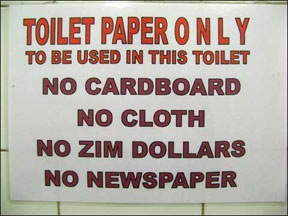 Inflation has the same result as reducing your paycheck. If the price of gasoline goes up 50%, the cost of your commute goes from $200 per month to $300 per month. That is like getting a pay cut of $1200 this year. If food goes up 50% and you normally spend $800 per month to feed your family, you'll lose $4800 from your yearly disposable income. During double digit inflation, it ALL goes up - gasoline, utilities, food, and clothes - and goes up quickly. Your credit cards are maxed out, you can't earn more because of high unemployment, and robbing Peter to pay Paul won't work because Peter has empty pockets.
Inflation has the same result as reducing your paycheck. If the price of gasoline goes up 50%, the cost of your commute goes from $200 per month to $300 per month. That is like getting a pay cut of $1200 this year. If food goes up 50% and you normally spend $800 per month to feed your family, you'll lose $4800 from your yearly disposable income. During double digit inflation, it ALL goes up - gasoline, utilities, food, and clothes - and goes up quickly. Your credit cards are maxed out, you can't earn more because of high unemployment, and robbing Peter to pay Paul won't work because Peter has empty pockets.
What do you do?
Prepare NOW. If you see a train coming you don't continue walking on the tracks until the train is on top of you. You react as soon as you are aware you're in danger.
David Ramsey, the economic guru, coined a saying that is very appropriate for the times we live. "If you will live like no one else, later you can live like no one else." Ramsey explains: “If you will make the sacrifices now that most people aren’t willing to make, later on you will be able to live as those folks will never be able to live.” If we see double digit inflation or hyperinflation, "living" may be literal. When others cannot afford to buy necessities, you want to be living comfortably.
Now is the time to learn how to live lean and prepare for times when that will be a necessity (if it isn't already).
 According to Karl Denninger of the Market Ticker, in the last 60-90 days prices on commodities are in double digit, if not hyperinflationary territory. Prices have increased so much they are adding "20-80% to the cost of the materials that go into your food in the last three months alone" Corn, 54% increase in price. Wheat, 63% increase in price. Soybeans, 26% increase in price. Rice, 31% increase in price. Oats, 83% increase in price. Don't think you can avoid eating these grains and buy cheaper foods - these are the things that feed our cows, and pigs, and chickens. Meat and dairy prices will skyrocket. Prepared foods makers will substitute ingredients, and packages will get smaller, lighter, and more expensive.
According to Karl Denninger of the Market Ticker, in the last 60-90 days prices on commodities are in double digit, if not hyperinflationary territory. Prices have increased so much they are adding "20-80% to the cost of the materials that go into your food in the last three months alone" Corn, 54% increase in price. Wheat, 63% increase in price. Soybeans, 26% increase in price. Rice, 31% increase in price. Oats, 83% increase in price. Don't think you can avoid eating these grains and buy cheaper foods - these are the things that feed our cows, and pigs, and chickens. Meat and dairy prices will skyrocket. Prepared foods makers will substitute ingredients, and packages will get smaller, lighter, and more expensive.
Imagine you have $50 in your pocket. But due to inflation, you need $50 to buy enough gas just to get to work. You also need $50 to feed your family dinner tonight. You also need $50 for your son's allergy pills - and he has really bad hay fever. But you only have $50, not $150 - and you don't have any way to get the rest. Wouldn't it be nice to have a bicycle in your garage that can take you to your office, enough food stored in your pantry to make a hearty dinner, and then you can use the $50 for those allergy pills?
The trick to surviving inflation - the period of time between the day prices go up, and the day your salary goes up to compensate for those increases - is to eliminate everything that you can, drastically reduce what you cannot eliminate, and find cheaper substitutes for anything that costs money.
We have a whole section on Tips and Tricks to save money and eliminate waste in the kitchen. See what works for you in your home.
 Eliminate - Simply do without. Turn the AC off. Do you have screens on your windows so you can open them up in the summer? Do you have fans to circulate air throughout your house? Turn off the heat until there is a hard freeze, and then only keep it warm enough in your house to keep the pipes from bursting. Do you have heavy clothes, bed linens, and drapes you can layer to keep warm? Do you have a fireplace or wood burning stove and a supply of fuel? Can you close off rooms to concentrate and preserve the heat? Go to bed early and get up early so you don't burn the lights all evening. Keep the lamps turned off and use a wind up or solar powered flashlight or lantern for moving around at night. When it is time to replace your carpet, choose wooden floors, tile or linoleum that can be cleaned with a broom and mop, rather than carpet that needs to be vaccuumed and steam cleaned regularly. Walk or bike, or use public transportation, and leave your car at home. If you can live without a car completely, better yet. You will save a lot of money.
Eliminate - Simply do without. Turn the AC off. Do you have screens on your windows so you can open them up in the summer? Do you have fans to circulate air throughout your house? Turn off the heat until there is a hard freeze, and then only keep it warm enough in your house to keep the pipes from bursting. Do you have heavy clothes, bed linens, and drapes you can layer to keep warm? Do you have a fireplace or wood burning stove and a supply of fuel? Can you close off rooms to concentrate and preserve the heat? Go to bed early and get up early so you don't burn the lights all evening. Keep the lamps turned off and use a wind up or solar powered flashlight or lantern for moving around at night. When it is time to replace your carpet, choose wooden floors, tile or linoleum that can be cleaned with a broom and mop, rather than carpet that needs to be vaccuumed and steam cleaned regularly. Walk or bike, or use public transportation, and leave your car at home. If you can live without a car completely, better yet. You will save a lot of money.
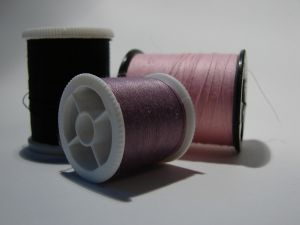 Reduce - Adjust your cooking to avoid overuse of appliances. Avoid recipes that call for long simmers and baking. Research recipes that are no cook, quick cook, or grilled, to avoid over using the stove in your kitchen. Do you remember the water saving bathroom mottoes of the 70's: 'If it's yellow let it mellow, if it's brown flush it down.' and 'Save water, shower with a friend.' Put a brick in your toilet tank to save water. Instead of rinsing and washing dishes several times during the day, fill your sink with hot sudsy water and let your dishes pile up during the day. Wash them all before you go to bed. If you turn your oven on to make bread, wrap a brick in flannel and put it in there. Then put the flannel wrapped brick in your bed to warm it on a cold winter's night. Mend your clothes, darn your socks, repair what breaks, repurpose what you have to fill your needs rather than buying new.
Reduce - Adjust your cooking to avoid overuse of appliances. Avoid recipes that call for long simmers and baking. Research recipes that are no cook, quick cook, or grilled, to avoid over using the stove in your kitchen. Do you remember the water saving bathroom mottoes of the 70's: 'If it's yellow let it mellow, if it's brown flush it down.' and 'Save water, shower with a friend.' Put a brick in your toilet tank to save water. Instead of rinsing and washing dishes several times during the day, fill your sink with hot sudsy water and let your dishes pile up during the day. Wash them all before you go to bed. If you turn your oven on to make bread, wrap a brick in flannel and put it in there. Then put the flannel wrapped brick in your bed to warm it on a cold winter's night. Mend your clothes, darn your socks, repair what breaks, repurpose what you have to fill your needs rather than buying new.
 Substitute - You CAN live without electric appliances. They are convenient, and it is fine to use them now if you can afford them. But in times of extreme frugality an electric can opener is a luxury. Do you have a manual can opener to use? If not, the time to get one is now. You can pick one up for 25 cents at a garage sale. Heck, get 2 or 3 as backup. A hand grater can replace your food processor. A french press replaces a coffeemaker. A whisk replaces a Kitchenaid mixer. Keep the kettle off, make sun tea. Make your own solar oven or rocket stove and use them instead of your kitchen stove.
Substitute - You CAN live without electric appliances. They are convenient, and it is fine to use them now if you can afford them. But in times of extreme frugality an electric can opener is a luxury. Do you have a manual can opener to use? If not, the time to get one is now. You can pick one up for 25 cents at a garage sale. Heck, get 2 or 3 as backup. A hand grater can replace your food processor. A french press replaces a coffeemaker. A whisk replaces a Kitchenaid mixer. Keep the kettle off, make sun tea. Make your own solar oven or rocket stove and use them instead of your kitchen stove.
Freezers are great for food storage. They allow you to stock up when produce is in season and meat is on sale. But if the cost of electricity skyrockets, you may want to reconsider. Learn how to can and dehydrate. Can you live with a smaller, more efficient refrigerator, or live without one completely? Buy condiments in small sizes for your food storage so you do not waste large amounts if you have to live without refrigeration.
What about your washing machine and dryer if the cost of utilities skyrockets? Get a couple of deep plastic tubs, a clothesline and clothespins. Stock up on bleach, hard soap for removing stains, detergent, and fabric softener. Use dishwashing liquid and wash your dishes in the sink. Buy abrasive pads, scrub brushes, and crochet or knit washcloths to use instead of expensive sponges that retain germs and odors and do not last long.
Keep your internet connection and drop your telephone and cable tv. Google phone can replace your telephone and it is free. Netflix and Hulu are much less expensive than cable tv for entertainment. Make sure your computer is in good working order and your monitor is energy efficient.
Prepare - Get what you need now while prices are relatively low. Search for sales, visit garage sales, advertise on freecycle and craigslist, and barter with friends and relatives.
You don't have to buy everything - but everything you obtain now is something you do not have to buy when you are counting every penny. These are hard times, and the future looks even more challenging. Think ahead, be smart, and be frugal.
Cooking from Scratch
As you can see by the graph below, less than half the US households serve even one hot cooked meal at home per day.
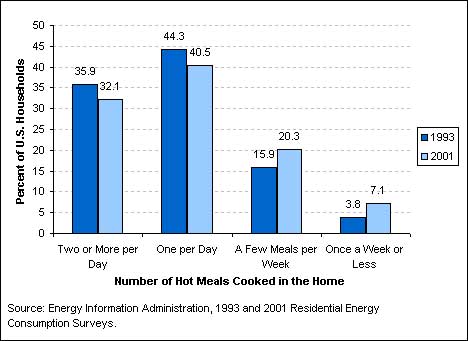
How likely do you think it is that meal was cooked from scratch, and not something like a frozen pizza or browned hamburger with boxed pasta?
A decade ago I read a newspaper article that said less than 5% of all women (sexist, I know) had ever made a cake from scratch. Less than 50% had ever made a cake from a boxed mix. EVER! When they wanted a cake, they went to the supermarket and bought one.
 As someone who cooks from scratch all the time, I was shocked. Making a cake from scratch is one of the easiest things there is. In fact, while cake mixes hit the shelves in the 1930's, up until WWII just about all homemade cakes were made from scratch. Why not? Instead of opening a box, you just toss together flour and baking powder in a bowl with a little sugar, salt and flavoring extract. Then add the oil, eggs and water. It was a flour shortage during WWII that convinced women to even try boxed mixes - and they caught on. I was an adult before I made my first cake from scratch, and then only because of the magnificent pictures and instructions in Rose Levy Beranbaum's "The Cake Bible". So I can understand people only making cakes and cupcakes from a box. It's faster than assembling and measuring ingredients and the results are all but guaranteed (if mediocre). But in this day and age, when Wilton equipment takes a full aisle in Michael's and the Food Network is one of the most popular cable channels, a survey saying fully half the women in America have never baked a cake was quite surprising.
As someone who cooks from scratch all the time, I was shocked. Making a cake from scratch is one of the easiest things there is. In fact, while cake mixes hit the shelves in the 1930's, up until WWII just about all homemade cakes were made from scratch. Why not? Instead of opening a box, you just toss together flour and baking powder in a bowl with a little sugar, salt and flavoring extract. Then add the oil, eggs and water. It was a flour shortage during WWII that convinced women to even try boxed mixes - and they caught on. I was an adult before I made my first cake from scratch, and then only because of the magnificent pictures and instructions in Rose Levy Beranbaum's "The Cake Bible". So I can understand people only making cakes and cupcakes from a box. It's faster than assembling and measuring ingredients and the results are all but guaranteed (if mediocre). But in this day and age, when Wilton equipment takes a full aisle in Michael's and the Food Network is one of the most popular cable channels, a survey saying fully half the women in America have never baked a cake was quite surprising.
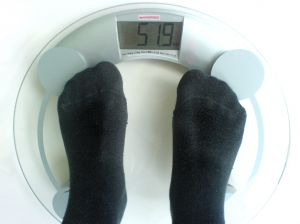 On June 29, 2010, Jeff Levi, executive director of the Trust for America's Health, announced the obesity rate has jumped in 28 states this last year. "More than two-thirds of states now have adult obesity rates above 25 percent" he said. Economic factors are one of the biggest reasons for the increase. With less money to spend on food, making the right choices are even more important.
On June 29, 2010, Jeff Levi, executive director of the Trust for America's Health, announced the obesity rate has jumped in 28 states this last year. "More than two-thirds of states now have adult obesity rates above 25 percent" he said. Economic factors are one of the biggest reasons for the increase. With less money to spend on food, making the right choices are even more important.
There is no question that you must eat more empty calories in prepared foods to get the same level of nutrition found in fresh whole foods. Prepared foods have made food our enemy. We're afraid to eat too much, afraid to eat at all -- because no matter how much supermarket people chow we stuff into our mouths, our energy levels drop and our bodies cry out in hunger. We are not getting what we need.
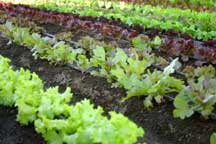 According to the NY Times, First Lady Michelle Obama planted a vegetable garden on the White House lawn to inspire everyone to eat more locally grown food as a way to cut down on energy use and also for better nutrition:
According to the NY Times, First Lady Michelle Obama planted a vegetable garden on the White House lawn to inspire everyone to eat more locally grown food as a way to cut down on energy use and also for better nutrition:
"The first lady, who said that she had never had a vegetable garden, recalled that the idea for this one came from her experiences as a working mother trying to feed her daughters, Malia and Sasha, a good diet. Eating out three times a week, ordering a pizza, having a sandwich for dinner all took their toll in added weight on the girls, whose pediatrician told Mrs. Obama that she needed to be thinking about nutrition.
“He raised a flag for us,” she said, and within months the girls had lost weight."
If you can't grow a garden, she said, you should not feel bad.
“You can begin in your own cupboard,” she said, “by eliminating processed food, trying to cook a meal a little more often, trying to incorporate more fruits and vegetables.”
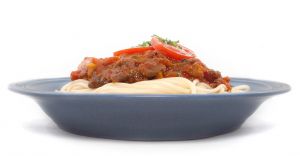 Eliminating processed food. THAT is the key. It is not about "going back" to the way grandma cooked. Grandma never had access to the wide variety of ingredients, the extraordinary equipment, and the cumulative knowledge of many great chefs that we have now. It is about recognizing and valuing what is good, over what is expedient.
Eliminating processed food. THAT is the key. It is not about "going back" to the way grandma cooked. Grandma never had access to the wide variety of ingredients, the extraordinary equipment, and the cumulative knowledge of many great chefs that we have now. It is about recognizing and valuing what is good, over what is expedient.
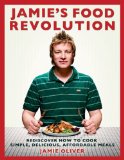 The voice of this movement is Food Network star and cookbook author Jamie Oliver, who has taken his Food Revolution to a whole new level, encouraging people to leave processed foods on the grocery shelves and choose whole, locally grown ingredients and cook from scratch. Oliver has gone to great lengths to save America's cooking skills in the home and introduce wholesome foods to children in our schools. He is an inspiration teaching people the skills they need to "start a food revolution in your own home", providing recipes, videos, and instruction to master the skills you need to feed yourself and your family. He states it quite simply, "all you need to do is cook something. From scratch. With fresh and raw ingriedients - no packets, no cheating!"
The voice of this movement is Food Network star and cookbook author Jamie Oliver, who has taken his Food Revolution to a whole new level, encouraging people to leave processed foods on the grocery shelves and choose whole, locally grown ingredients and cook from scratch. Oliver has gone to great lengths to save America's cooking skills in the home and introduce wholesome foods to children in our schools. He is an inspiration teaching people the skills they need to "start a food revolution in your own home", providing recipes, videos, and instruction to master the skills you need to feed yourself and your family. He states it quite simply, "all you need to do is cook something. From scratch. With fresh and raw ingriedients - no packets, no cheating!"
W. Hodding Carter and Gourmet Magazine's Extreme Frugality Series
I really like to see mainstream media getting into the recent 'fad' of frugal living. Even though people have lived frugally for millenia, let's face it, the post WWII mentality has been to spend all we have, then borrow more money, in order to consume more and more goods, thereby keeping the economy afloat. We're all seeing how that has worked out, haven't we? Our money is gone or soon will be, and our lives are not any better than our parents. More worryingly, we are leaving our children a legacy of living with less because we greedily took more. One of the better series on frugal living is Gourmet Magazine's series on extreme frugality, written by W. Hodding Carter. Like many people Carter took a look at his finances one day and decided he was spending far more than he earned. Rather than crash and burn, he took the situation into his own hands and he and his family have cut back their expenses, especially where it concerns food. Here's his YouTube video explaining how they do it.
Also check out Carter's articles, in Gourmet Magazine's Online Archives: Extreme Frugality
Recycling is so yesterday!
Don't buy packaging in the first place.
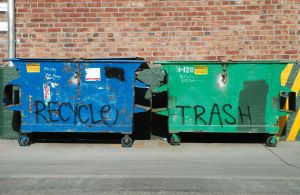 Yesterday, a neighbor and I got into a discussion about recycling. Recycling keeps items out of the landfill and puts glass, plastics, and cardboard back into production. But is it a good thing? The plastic you toss into the recycling pail has to be processed before it can be reused. It has to be sorted (energy) washed (using clean water) and sterilized (more energy), then chopped up (more energy), transported (yet more energy) and finally used as the raw material to make yet another molded, printed, wrapped, package to hold our food. That is better than throwing it in the garbage, I guess, but it certainly doesn't sound "green" to me. Why are we worried about recycling, when we should be worried about the over production of unnecessary packaging?
Yesterday, a neighbor and I got into a discussion about recycling. Recycling keeps items out of the landfill and puts glass, plastics, and cardboard back into production. But is it a good thing? The plastic you toss into the recycling pail has to be processed before it can be reused. It has to be sorted (energy) washed (using clean water) and sterilized (more energy), then chopped up (more energy), transported (yet more energy) and finally used as the raw material to make yet another molded, printed, wrapped, package to hold our food. That is better than throwing it in the garbage, I guess, but it certainly doesn't sound "green" to me. Why are we worried about recycling, when we should be worried about the over production of unnecessary packaging?
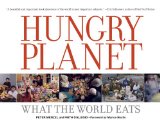 Hungry Planet: What the World Eats by photographer Peter Menzel and author-journalist Faith D'Alusi, is a photographic record of what diverse populations eat in a typical week. It is a wonderfully informative book and I strongly recommend everyone read it, as it will put your own family's food consumption into perspective. As I thumbed through the pages I noticed the average family from a "civilized" society has a very high food bill because they eat a lot prepackaged foods and a significant amount junk food, while impoverished third world families sit behind sacks of grain and a wide array of fresh vegetables and fruit.
Hungry Planet: What the World Eats by photographer Peter Menzel and author-journalist Faith D'Alusi, is a photographic record of what diverse populations eat in a typical week. It is a wonderfully informative book and I strongly recommend everyone read it, as it will put your own family's food consumption into perspective. As I thumbed through the pages I noticed the average family from a "civilized" society has a very high food bill because they eat a lot prepackaged foods and a significant amount junk food, while impoverished third world families sit behind sacks of grain and a wide array of fresh vegetables and fruit.
 While not diminshing the problem of those who are truly hungry from lack of food, it appears we now view a wealth of fresh ingredients as poverty, while the privileged eat a diet of fillers and thickeners, artificial dyes, sweeteners, flavors, preservatives and all manner of unpronouncable chemicals, triple wrapped in brightly colored packages in just the right size to feed 2 or 4.
While not diminshing the problem of those who are truly hungry from lack of food, it appears we now view a wealth of fresh ingredients as poverty, while the privileged eat a diet of fillers and thickeners, artificial dyes, sweeteners, flavors, preservatives and all manner of unpronouncable chemicals, triple wrapped in brightly colored packages in just the right size to feed 2 or 4.
No matter where your ancestors lived, you can be sure they didn't go to the supermarket and leave with a cart full of prepared foods. There were no supermarkets. They had a small garden, maybe a few fruit trees and berry bushes in their back yard, and for the rest of their diet they brought a sack or cart to open air markets and filled it with fresh produce, meat, dairy and bakery items.
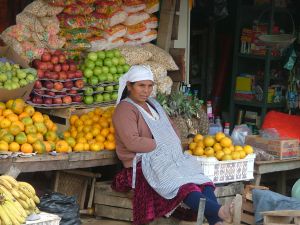 They didn't think about "going green" because when it came to food, they were already there.
They didn't think about "going green" because when it came to food, they were already there.
Think of all the money we spend on PACKAGING. Not food. Food is cheap. We spend our money on pretty printed cardboard, plastic bottles, and big gaudy plastic bags, that we THROW OUT. We don't even keep the stuff. It's just a tiny container that attracts our attention at the store, tells us we are feeding our family healthy nutritious foods when we are not, and then when we take out the tiny portion inside, we get to toss that pretty package in the garbage can.
Why do we put so much emphasis on recycling, when you can buy in bulk as much as possible and make your own products at home? Making your own bread is simple. Throw 5 ingredients in a bread maker and come back 90 minutes later. You just saved $2 over supermarket bread, and you have a hot, fresh and more nutritious loaf without any packaging to toss into the trash.
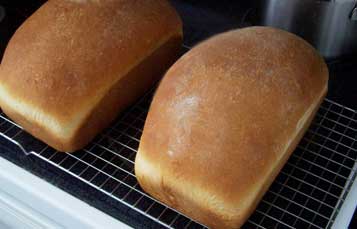 Go through your pantry and learn how to make the products you normally buy in itsy bitsy pretty little jars. Make a pot of soup or a casserole and freeze for later what you don't eat tonight. Make your own cereal. What is more healthy for you than granola? It is just oats and honey, slowly roasted in your oven. That is less effort than making home made cookies - and if you make your own granola you can customize it and add the flavorings and dried fruit or nuts you like, not something prepackaged for the masses at the store. Making your own jams and jellies, condiments and spice mixes is also simple. You don't have to do it all today. Every month learn how to make one thing from scratch. Just one thing. If you don't have the equipment to can or freeze or dehydrate, start with items that don't need anything special - like tossing together your own spice mixes and mixes for cakes and pancakes and bisquits. 10 minutes effort on the weekend will pay off in big savings.
Go through your pantry and learn how to make the products you normally buy in itsy bitsy pretty little jars. Make a pot of soup or a casserole and freeze for later what you don't eat tonight. Make your own cereal. What is more healthy for you than granola? It is just oats and honey, slowly roasted in your oven. That is less effort than making home made cookies - and if you make your own granola you can customize it and add the flavorings and dried fruit or nuts you like, not something prepackaged for the masses at the store. Making your own jams and jellies, condiments and spice mixes is also simple. You don't have to do it all today. Every month learn how to make one thing from scratch. Just one thing. If you don't have the equipment to can or freeze or dehydrate, start with items that don't need anything special - like tossing together your own spice mixes and mixes for cakes and pancakes and bisquits. 10 minutes effort on the weekend will pay off in big savings.
You won't find big bags of bulk items in the supermarket, of course. The supermarket makes its profit off of pretty packages that we have to then recycle to feel like we're doing something good for the planet. You'll need to shop at farmer's markets, ethnic markets, and wholesale restaurant supply stores to buy in bulk. But the prices will suprise you, and make you realize you're not just paying for the contents of those pretty packages, but the package itself.
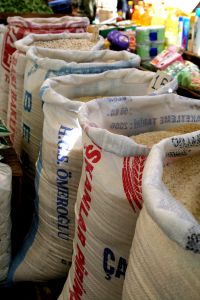 Recycle? Sure... it is better than the trash. But how about we don't spend our hard earned money on excess packaging in the first place, and just buy FOOD?
Recycle? Sure... it is better than the trash. But how about we don't spend our hard earned money on excess packaging in the first place, and just buy FOOD?
"You're weird." my neighbor said.
Yes, I guess I am.
I don't buy everything in bulk, of course. My family and I enjoy a bag of potato chips as much as anyone. But I do try to buy in bulk whenever possible. It just makes sense. I want to spend my money on food, not packaging or processing. So I want the highest quality, least processed, products that I can find, and often the more the manufacturer or farmer can fit into a bag or box, the cheaper the cost.
Because I buy whole, unprocessed foods, I have the extra bonus of filling my pantry with foodstuffs that have an extremely long shelf life. I have many varieties of grains, such as wheat, barley, corn, spelt, and oats. I have jasmine rice, brown rice, basmati, black, red, and wild rice. Dozens of legumes - cranberry beans, pinto, navy, lentils, and yellow and green peas. Sugars, molasses, maple syrup and honey. I buy my spices at ethnic food stores where I can get a pound for little more than the price of a small jar at the supermarket, the spice is pungent and fresh, and does not have silicone or cornstarch fillers. It is just pure spice.
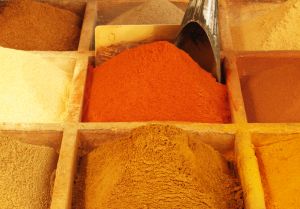
I keep my bulk ingredient supply in food safe pails, in a cool dark location, and refill quart containers that I keep handy in my pantry. I still go shopping at local markets to buy fresh ingredients - dairy, meat, fish and produce. But again, I buy locally produced products that do not have to be flash frozen, treated, or preserved because they will be transported long distances. Keep cutting out that middle man. The goal is, from the farm to your plate with as few steps in between as possible.
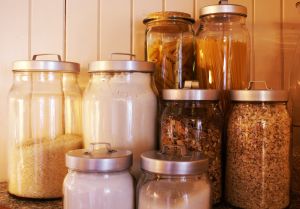 Every afternoon I take a bit of this and a bit of that, combine it, and I have a healthy dinner for my family. We eat the same menu as everyone else - we have tacos and pizza and Gen Tso's chicken, big salads and roasts and stir fries, kabobs with couscous, spaghetti and meatballs, soft bread with peanut butter and jelly, and hearty soups and stews and delicious casseroles. I don't spend all day in the kitchen or bent over a stove. Quite the opposite. I spend time processing my ingredients precisely so I can slap together meals post haste. But by avoiding processed foods and shopping in wholesale markets and bulk suppliers, there are few packages to recycle and no preservatives or artificial sweeteners going into the bellies of those I love.
Every afternoon I take a bit of this and a bit of that, combine it, and I have a healthy dinner for my family. We eat the same menu as everyone else - we have tacos and pizza and Gen Tso's chicken, big salads and roasts and stir fries, kabobs with couscous, spaghetti and meatballs, soft bread with peanut butter and jelly, and hearty soups and stews and delicious casseroles. I don't spend all day in the kitchen or bent over a stove. Quite the opposite. I spend time processing my ingredients precisely so I can slap together meals post haste. But by avoiding processed foods and shopping in wholesale markets and bulk suppliers, there are few packages to recycle and no preservatives or artificial sweeteners going into the bellies of those I love.
Best of all, I save tons of money. Better in my pocket, better for my family, better for the planet.
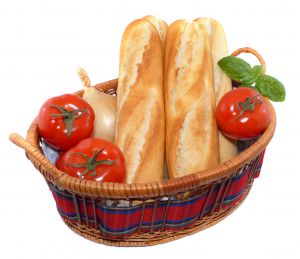
Cooking on a Small Budget
Your pantry is empty and every week payday comes and you have next to nothing to spend on food.
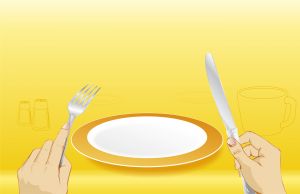 The details of how you got to this point don't matter. You could have gotten here through unemployment or underemployment, or divorce, a personal tragedy, a thieving relative, or a bad decision. Life is tough and sometimes we end up in places we don't want to be - places we never thought we would be in at all. You have the emotional burden of dealing with the problems that got you there, and the very pressing issue of feeding yourself and perhaps even your family.
The details of how you got to this point don't matter. You could have gotten here through unemployment or underemployment, or divorce, a personal tragedy, a thieving relative, or a bad decision. Life is tough and sometimes we end up in places we don't want to be - places we never thought we would be in at all. You have the emotional burden of dealing with the problems that got you there, and the very pressing issue of feeding yourself and perhaps even your family.
Faced with such a situation many people will only deal with their immediate needs - the next meal. It's easy to ignore the rest of the week. Cross that bridge when you come to it, right? So they'll head off to a fast food place and buy something cheap. For $5 or so they will have a meal, never even considering the fact that same $5 could feed them for a week if they spent it in a grocery store.
The cheapest way to feed yourself for a week is to buy a bag of rice and a bag of dried beans. Plain rice and beans is survival food. No one will try to pass it off as a delicious gourmet dish. But when you lack money and need to eat, rice and beans will fill your stomach and provide you with the nutrition you need to make it until the next payday - all for the cost of ONE meal at a fast food restaurant. If you have an ethnic grocery near you, you're in luck. Food staples are usually much cheaper in ethnic grocery stores. You may be able to get a bag twice the size of what the supermarket sells, for the same price.
I had my month of rice and beans a decade ago.
Before my personal SHTF experience, I was a typical suburban mom. I went to the supermarket and bought food when I needed it. Whatever the cashier rang up was what it cost. I didn't clip coupons or shop around, or even have a budget. I was not accustomed to having to live within a budget.
Then, things changed. I was suddenly alone with two children and only $30. per week to spend on food.
 The first week I spent $15 on a few basic vegetables, flour, butter, milk, eggs, oatmeal, one cheap roasting chicken, a big bag of dried beans and a bag of rice. I partially boiled the chicken for broth, then roasted it and used the drippings for gravy, then picked the meat off the bones. I tossed vegetable peels in with all of the picked clean chicken bones, and roasted them slowly to a nice mahogany brown, then covered it all with water and gently simmered to make stock. I squeezed every drop of flavor I could out of that chicken. I measured out exactly the amount of flour needed for noodles, pie crusts, and bread. The children had chicken and dumplings, chicken pot pie, chicken noodle soup, chicken and rice soup, chicken with veggies and gravy over rice, open faced chicken sandwiches... Do you see a theme here?
The first week I spent $15 on a few basic vegetables, flour, butter, milk, eggs, oatmeal, one cheap roasting chicken, a big bag of dried beans and a bag of rice. I partially boiled the chicken for broth, then roasted it and used the drippings for gravy, then picked the meat off the bones. I tossed vegetable peels in with all of the picked clean chicken bones, and roasted them slowly to a nice mahogany brown, then covered it all with water and gently simmered to make stock. I squeezed every drop of flavor I could out of that chicken. I measured out exactly the amount of flour needed for noodles, pie crusts, and bread. The children had chicken and dumplings, chicken pot pie, chicken noodle soup, chicken and rice soup, chicken with veggies and gravy over rice, open faced chicken sandwiches... Do you see a theme here?
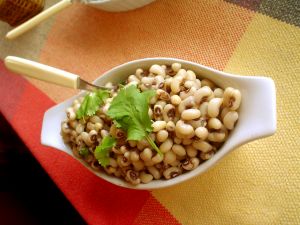 I ate rice and beans. Breakfast, lunch and dinner. What it lacked in flavor it more than made up for in promise. This lowly dish was my path out of food poverty.
I ate rice and beans. Breakfast, lunch and dinner. What it lacked in flavor it more than made up for in promise. This lowly dish was my path out of food poverty.
The next week I had $30 plus the $10 I had saved. WOOT! Week #2, ham was the meat of the week, and I bought a few spices, and sugar, but I basically ate that same diet of rice and beans - and once again spent only $20 out of my budget, saving another $10. The next week I introduced my children to Tuscan bean soup, baked beans, and pasta with beans, and saved yet another $10. By the end of the month I had a fairly decent amount to spend on food. Then the light went on.
It's not the amount you EARN, it is the amount you SPEND.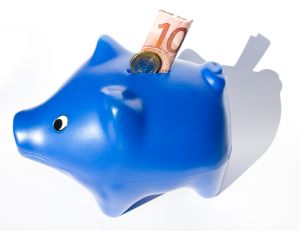
How could I spend LESS on the food we needed, so I would have more money in my pocket? Why, coupons and sales, of course! I stopped by the local coffee shop late every afternoon and picked up the discarded newspapers for the coupons inside. I waited for the monthly sales and 2x coupons, and walked out of the supermarket with $160 in groceries for $60.
That food fed us for the next month, and I had a lot left over. That meant I had my entire month's food budget in hand. I didn't go back to shopping as normal. I had created a new normal. With meal planning, careful shopping and couponing, and a lot of home cooking, I saved substantially on the cost of the food we ate. I had more money for other things - and at that point those things were all necessities. When it came to spending my food dollars, my emphasis turned from filling our bellies to improving nutrition, especially since I had young children and come from a family with a history of cancer and heart disease. I wanted to give my children a good foundation and protect my own health from the effects of all the non-food ingredients in processed foods.
When it came to spending my food dollars, my emphasis turned from filling our bellies to improving nutrition, especially since I had young children and come from a family with a history of cancer and heart disease. I wanted to give my children a good foundation and protect my own health from the effects of all the non-food ingredients in processed foods.
That is when I began "prepping". This is a new term for something very old - building up your pantry with basic staples that have an extremely long shelf life when times are good, in order to tide you over when times are bad. This is how our grandparents and every generation before them lived. They had to. There were no social safety nets to save them from malnutrition and the illnesses that go along with depleting the body's resources. Their preps were not stashed away for a rainy day. They were a living, breathing part of their kitchen. When food was in season and cheap, they ate fresh food while they loaded their pantries with goodness. Then when the winter came, or a natural or personal disaster struck, they turned to their pantries and made their meals from stored ingredients.
Many of the foods we love today were developed as ways to preserve the harvest when it came in - pasta, cheese, yogurt, jerky, pickles, sauerkraut, kimchi, jellys and jams, soda, wine, beer, salted hams and smoked meat and fish, roasted nuts, raisins, sun dried tomatoes, apple chips, popcorn, and everything that comes in a can, was first made to stock a pantry. Refrigerators and freezers were invented to preserve fresh food so we could eat it later.
How ironic it is that after a full history of mankind seeking better ways to preserve food and people proudly showing off their well stocked pantries, we now ship our food thousands of miles so we can eat it fresh and the average household in the US has less than 3 days food on hand - even though most of us live paycheck to paycheck.
What a recipe for disaster!
These days my pantry is always full. I call it my insurance policy.... and yes, I DO have lots of rice and beans in there.
I'm in Love with Vegetable Powders.
It started with roasted garlic powder. I had been purchasing my garlic powder from the restaurant supply store. It was good but I didn't like the silicone added to keep it flowing. Why eat sand? Making my own garlic powder had to be simple, right? Just puree garlic cloves in a blender, spread out on parchment paper, and dehydrate. Then toss into a blender again and pulverize to powder. I quickly thought - do this outside. My grandfather told stories about being gassed during WWI. I didn't want to go there.
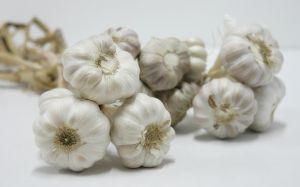 I was very pleased with the results. It was much, much fresher and stronger than the store bought brands - and I could make small batches, as needed.
I was very pleased with the results. It was much, much fresher and stronger than the store bought brands - and I could make small batches, as needed.
As much as I like garlic, I like roasted garlic even more. All of the sharp pungent flavors mellow into a caramelized, almost nutty taste. If garlic powder was good, roasted garlic powder had to be even better. So I smooshed a head full of roasted garlic cloves out on parchment and dehydrated it. Instant family favorite! Everyone who tried it, wanted some to bring home. They poured it onto pizza, sprinkled it into spaghetti, folded it into hamburgers and meatloaf, mixed it with herbs and butter or oil and spread on bread. Then they yelled for more roasted garlic powder! For weeks my crockpot and dehydrator were going full tilt, churning out quart after quart for relatives and friends.
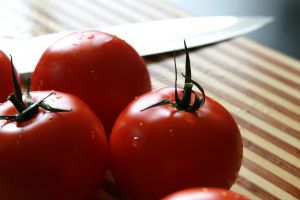 What goes with garlic? Why, tomatoes of course! I had never heard of tomato powder. But if I could dry roasted garlic, I could dry tomatoes - and oh, what I could do with tomato powder! So I experimented with small grape tomatoes, cherry tomatoes, beefsteaks and plum tomatoes. I even dried canned tomatoes. Two ways worked the best. The first was just pouring out a can of tomatoes onto the dehydrator tray and drying them. Choose firm types like oxheart, plum or san marzano tomatoes, that are seedless and skinless. Tomatoes have a lot of water in them, but avoid high temperatures in order to make them dry faster. You don't want to cook them. Low temperatures and slow drying time will preserve the bright, fresh flavor. If you are blessed with a garden or have access to very ripe, sweet tomatoes (and again, a firm type), then you can slice, remove the seeds, and dry them in your oven. When crispy just toss into the blender and pulverize. I like to put anything I dehydrate back into the heat for an hour or two to remove any hidden moisture. I also use a mesh colander to separate out any remaining seeds, or tiny bits that do not blend to powder.
What goes with garlic? Why, tomatoes of course! I had never heard of tomato powder. But if I could dry roasted garlic, I could dry tomatoes - and oh, what I could do with tomato powder! So I experimented with small grape tomatoes, cherry tomatoes, beefsteaks and plum tomatoes. I even dried canned tomatoes. Two ways worked the best. The first was just pouring out a can of tomatoes onto the dehydrator tray and drying them. Choose firm types like oxheart, plum or san marzano tomatoes, that are seedless and skinless. Tomatoes have a lot of water in them, but avoid high temperatures in order to make them dry faster. You don't want to cook them. Low temperatures and slow drying time will preserve the bright, fresh flavor. If you are blessed with a garden or have access to very ripe, sweet tomatoes (and again, a firm type), then you can slice, remove the seeds, and dry them in your oven. When crispy just toss into the blender and pulverize. I like to put anything I dehydrate back into the heat for an hour or two to remove any hidden moisture. I also use a mesh colander to separate out any remaining seeds, or tiny bits that do not blend to powder.
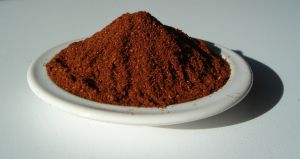 As I suspected I was able to find 1000 uses for tomato powder - a little water made tomato paste. A little more water made tomato sauce. I added the powder to bread and pasta, it added intensity and flavor to soups and stews, mixed with mayo and diced raw veggies I had a yummy garden dip, I even made my own homemade spaghetti sauce, chili, and taco mixes. No more 99 cent packages for me! I mixed my own, at home!
As I suspected I was able to find 1000 uses for tomato powder - a little water made tomato paste. A little more water made tomato sauce. I added the powder to bread and pasta, it added intensity and flavor to soups and stews, mixed with mayo and diced raw veggies I had a yummy garden dip, I even made my own homemade spaghetti sauce, chili, and taco mixes. No more 99 cent packages for me! I mixed my own, at home!
Next on my agenda, I branched out to sweet potatoes. My son loves pureed sweet potatoes. It's one of the few vegetables he's happy to eat. If I bake a few sweet potatoes and dry them, would they reconstitute to a sweet potato puree? The moment of truth came. I put a few spoonfuls of sweet potato powder into boiling water, and in 10 minutes you could not tell the difference between the dried sweet potatoes and fresh cooked. Add a little more water to make them thinner, and they were just like jarred baby food.
Ah, baby food! What a wonderful idea. Those little jars are so expensive! If you make your own dehydrated vegetable powder you know exactly what is in it, it takes up much much less room in your kitchen cabinet, you can bring it anywhere with you, and you control the portion size - make as much or as little as you want. If your 'baby' is an invalid or an elderly person, you can give them an adult sized portion.
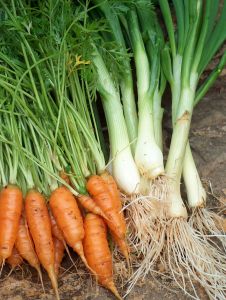 You don't have to use fresh vegetables. Frozen veggies are actually better because they are already blanched - and supermarkets often have frozen veggies on sale as loss leaders. If you are going to dehydrate frozen vegetables to use as is, then just dump the bag out on the tray and dry. But if you want to make a vegetable powder, let the vegetables defrost in a colander over your sink or a bowl so all the water drains off, and then blend. Dry like you would a fruit leather, only keep drying until crispy, then blend to a powder.
You don't have to use fresh vegetables. Frozen veggies are actually better because they are already blanched - and supermarkets often have frozen veggies on sale as loss leaders. If you are going to dehydrate frozen vegetables to use as is, then just dump the bag out on the tray and dry. But if you want to make a vegetable powder, let the vegetables defrost in a colander over your sink or a bowl so all the water drains off, and then blend. Dry like you would a fruit leather, only keep drying until crispy, then blend to a powder.
Of course you can use fresh vegetables too. Just follow the usual dehydrating instructions - firm ripe produce, slice into same size pieces, blanch or treat to prevent browning, dehydrate at the recommended setting, then pulverize to powder.
You can use your vegetables straight or mix them together for soups (leek and potato is delicious, as is split pea, and tomato soup), seasonings, healthy thickeners, vegetable drinks, etc. I'm working on a V8 type drink now, using celery, parsley, carrots, spinach, onions, beets, garlic, watercress and tomato powders. I'll post the recipe when I have it perfected.
Emotional Baggage About Food

One day we were so busy at work we didn't have time to go out and get lunch. Our boss ordered in a variety of food from a local vegetarian deli so we wouldn't go hungry. I tried a cup of soup and it was Delicious! One of my co-workers wanted to know what kind of soup I was eating. "Tomato" I told her. "You should try some." "No way!" she scoffed, "I don't eat no soup that doesn't have meat in it!" She looked around the table. "Any roast beef?" No, she was told, no roast beef. There's no meat in vegetarian food. What about a roasted vegetable pita?
"I'm not eating any of THIS food!" she all but yelled.
"Why not?" I asked.
"I'm better than that!" she said. "This is poor people food. It's what you scrounge from your back yard when you can't afford meat!"
She'd rather go hungry than eat the very expensive, high quality food that was provided to her - for free.
We all have 'food baggage' -- and I'm not talking about the type that sits on our hips and pads our waistline. I mean the ideas, biases, and prejudices we have about the food we eat. Manufacturers are very aware of the emotional baggage we have regarding food. They design their products to meet our emotional needs. They will take our money and fill us with junk food that is sweet, comforting, made just for us, and wrapped in a pretty package like a present.
There's no shortage of websites that will tell you how to shop, how to use coupons, how to buy in bulk, how to buy in season, the value of learning how to cook and how to garden in order to reduce the amount of money you spend on food. When you control your food budget, rather than your food budget controlling you, it's like another paycheck in your pocket every week.
There aren't many websites that will tell you that you have to get past those psychological roadblocks first.
 So that is where we are going to START.
So that is where we are going to START.
You are not born with food baggage. But as soon as you open your mouth, it piles on.
There's no such thing as 'poor people food'. In Colonial Rhode Island one type of food was considered such low quality it was only fed to servants - in fact the State had to pass a law limiting the number of days per week LOBSTER was fed to household help. A 1928 political advertisement bragged how they had put "A chicken in every pot." because chicken was so expensive it was reserved for special Sunday dinners. Until recently many types of fresh fruit and vegetables were available only to the very wealthy who could afford to ship them in out of season. Don't label your food. If you like it, eat it!
Food is nourishment. It can be very enjoyable to make meals, and very enjoyable to eat them - especially in good company. But food is FOOD. It is not a substitute for love. It does not solve your problems. Food is not a reward.
Working with food does not denigrate you. Growing food, processing food, and cooking food are not only emotionally and financially rewarding, it is the ONLY way to insure you are feeding your family high quality food, free of all those nasty pesticides, fillers, chemicals and preservatives in processed foods. Working with food is a very real way to express your LOVE of your family - and yourself.
You aren't lazy. You lack motivation. You don't think the amount of work involved in keeping a frugal kitchen will reap enough reward to make it worth it. There are so many other things you'd rather be doing than clipping coupons or making your own granola. How's that working out for you so far?
You wouldn't be here unless you wanted to save money on your food budget. I hate to tell you but there's no Food Fairy gonna come down to save you. You need to change the way you do things - and the first place is to really examine the roadblocks that keep you where you are.
